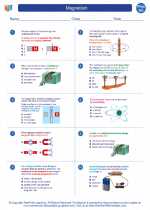Valleys in Physics
When studying the concept of valleys in physics, we are typically referring to the gravitational potential energy associated with an object at various points in a system. In the context of classical mechanics, a valley can represent a point in space where an object has a lower gravitational potential energy compared to other points in the system.
Understanding Valleys
To understand the concept of valleys in physics, it's essential to grasp the idea of gravitational potential energy. Gravitational potential energy is the energy an object possesses due to its position in a gravitational field. When an object is at a higher altitude, it has more gravitational potential energy, while at a lower altitude, it has less gravitational potential energy.
Imagine a ball rolling down a hill. At the top of the hill, the ball has a higher gravitational potential energy due to its elevated position. As it rolls down the hill, its potential energy decreases, reaching its lowest point at the bottom of the hill. This decrease in potential energy can be visualized as the ball moving into a "valley" in the gravitational potential energy landscape.
Key Concepts
1. Gravitational Potential Energy: This is the energy an object possesses due to its position in a gravitational field. It is directly related to the object's mass, the acceleration due to gravity, and its height above a chosen reference point.
2. Valley Model: In physics, the concept of valleys is often used as a visual metaphor to represent points in space where an object has lower gravitational potential energy relative to other points in the system. Objects naturally tend to move towards these lower energy states.
Study Guide
When studying valleys in physics, it's important to focus on the following key areas:
- Understanding the concept of gravitational potential energy and its relationship to an object's position in a gravitational field.
- Visualizing the valley model and how it relates to the movement of objects towards states of lower potential energy.
- Practicing problems that involve calculating gravitational potential energy at different points in a system.
- Exploring real-world examples of objects moving into valleys in gravitational potential energy landscapes.
By mastering these concepts and skills, you'll develop a solid understanding of the role of valleys in physics and their significance in classical mechanics.



